|
Posted in category "Dissent"
 Archbishop O’Connor, 1984 John J. O’Connor, Bishop of Scranton, Pennsylvania, arrived in New York City in January 1984. He was named Archbishop of New York shortly before his installation and made a cardinal by Pope John Paul II in 1985. O’Connor stayed in the news, and in the center of multiple controversies until he died in 2000. He was very passionate about several issues, particularly opposition to abortion and support of organized labor. He also didn’t mince words about lesbian and gay people: no hiring, housing, or civil rights protections. From the start he was a relentless foe of Mayor Edward Koch’s Executive Order 50, a directive which prohibited “agencies that receive city funds from discriminating against homosexuals in employment.”
Although he denied it, O’Connor pressured Francis Mugavero, Bishop of Brooklyn, to shift his diocese’s stance of engagement with gay people to stiff opposition to legal protections. In February 1984 they issued a joint statement in which they claimed that the gay rights bill was “exceedingly dangerous to our society,” explaining, “We believe it is clear that what the bill primarily and ultimately seeks to achieve is the legal approval of homosexual conduct and activity, something that the Catholic Church, and indeed other religious faiths, consider to be morally wrong. Our concern in this regard is heightened by the realization that it is a common perception of the public that whatever is declared legal, by that very fact, becomes morally right.”
Archbishop O’Connor was very clear on his position about homosexuals in the church’s employ–“We have said repeatedly that we have no problem whatsoever in employing people admitting to or not admitting to homosexual inclinations. If an individual avows engagement in homosexual activity, then we want to be able to say whether or not we will employ that person in this particular job, and we feel this is a perfectly appropriate thing for any agency. You know, we have five thousand, seven hundred youngsters in child-care agencies, and they are the ones currently at issue.” O’Connor said it would be wholly alien to Catholic teaching to employ in a child-care agency someone who openly advocated homosexuality.
In September 1984, I was a member of a delegation from the Coalition for Lesbian and Gay Rights (CLGR) who met with Archbishop O’Connor at the New York Catholic Center to discuss Executive Order 50. Terrence Cardinal Cooke, O’Connor’s predecessor, had refused to meet with Dignity/New York to discuss it. Coalition representatives were packed with Catholics, some of whom were members of Dignity and the Conference for Catholic Lesbians (CCL). When we arrived at the building, all in business attire, the guard at the door waved us through saying, “This way, ladies, or whatever…” As we got on the elevator, someone who knew who we were and where we were headed whispered, “Good luck.”
We were ushered into a conference room to wait for Archbishop O’Connor. I had a seat toward the end of the table facing the door. I saw Archbishop O’Connor striding down the corridor towards the meeting room. He was alone; no aides accompanied him. He looked grim. I don’t know what possessed me, but I winked at him. He winked back! We smiled. O’Connor walked into the room and walked around the table shaking everyone’s hand. I thought, “Perhaps there’s hope.” He sat down and the meeting started.
I can’t remember what was said, but all our arguments and personal experiences of ridicule, threats, and rejections by our friends, family, co-workers and faith based on our sexual orientation didn’t affect him. He said something to the effect that the Church would never accept us in the way we wished to live. The table went totally silent. It was a stunning moment; I felt the pain from his statement totally wash over me. I cried. Several other people at the table also cried, including a man who had recently lost his children in a custody battle. I turned to look at Archbishop O’Connor and saw that he looked surprised. He may have thought that our firmness and anger at our Church meant that we hated it or didn’t care. The opposite was true. There was nothing else to say and we left.
A few weeks later, I decided to write him a thank you note for the meeting. I told him I appreciated that he met with us and listened to what we had to say. I also said that while we strongly disagreed, I had respect for him for his straightforward expression of what he believed.
Three weeks later I received a reply to my letter.
Dear Karen:
Your letter…was extraordinarily kind and touched me deeply. I am indeed grateful. It is my sincere hope and prayer that through the years ahead I will be able to serve you in some way that you will consider helpful. My convictions about Church teaching are very deep. I do not anticipate a change in such teachings, and neither do I see it precluding our loving one another as brothers and sisters in Christ.
Please believe that I will give deeply sincere consideration to any recommendations that can help us in that regard in accordance with the tenets of the church which I am certain we both love.
You and your associates are very much in my masses and my prayers, and I ask that you keep me in yours as well.
Faithfully in Christ,
John J. O’Connor
We never spoke, or saw one another again, but the experience of meeting Archbishop O’Connor helped to guide me on how to engage with others with whom I don’t agree:
-Listen to adversaries as well as friends. One discussion may not change any minds, but it will have an impact and it shows a basic respect and courtesy.
-Look for the good in people. See a whole person, not just an opinion or point of view.
-Persevere. The Coalition members at the O’Connor meeting continued the fight for gay and lesbian civil rights. Dignity and CCL continued to work for the respect and recognition of lesbian and gay people in the Church.
On March 20, 1986, the New York City Council passed a homosexual rights bill by an unexpectedly wide margin of 21 to 14. The bill forbade discrimination based on sexual orientation in housing, employment, and public accommodations. The bill did provide an exemption for religious institutions.
The fear that the Archdiocese of New York expressed came true: public protections guaranteed by law did change public perception of lesbian and gay people. The widening acceptance and protection encouraged people to live and love more openly. As more and more gay people came out to their friends, family and colleagues, media portrayals also changed, which encouraged even more people, and younger people, to come out.
In 2013, even the highest level of the Church changed. In response to a question from the news media about a gay priest, Pope Francis made the statement, “Who am I to judge?”
Nothing changes without courage. Perhaps the most important contribution we can make to our own liberation as lesbian and gay people is to come out—to family, friends, colleagues at work, school, organizations where we volunteer, and yes, to people we go to church with every week. It takes a lot of courage to do this. And we might lose, perhaps forever, some people we love and admire, and much more.
The progress made in the cause of marriage equality over the last ten years is widely attributed to the greatly increased visibility of gay people. When I was growing up, I didn’t know anyone who lived openly as a homosexual, much less as a homosexual couple. Now, just about everyone knows a friend, family member or co-worker who is gay or lesbian. They know them, love them, and we are a part of each other’s life. Getting to know who we are as people—and as part of a couple—has made all the difference to our safety, dignity and respect.
Imagine the immediate change in the Catholic church if every lay person, priest, sister, bishop, cardinal, teacher, student, university administrator, health professional, writer, theologian, social service worker, everyone who is gay and works or is active in a Catholic institution, put on a lavender star and announced they are gay or lesbian… Just imagine how much would change in that moment. It’s great to dream about, but it is not going to happen, because of fear and the retaliation that would occur.
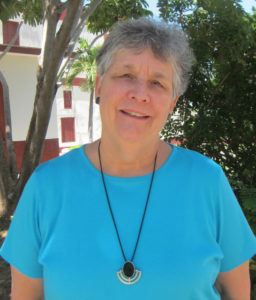 Dr. Mary E. Hunt As theologian Dr. Mary E. Hunt pointed out in a May 2013 article in the National Catholic Reporter, “Courage is an old-fashioned virtue that comes in many forms: physical, social and political. I have paid attention to it of late—both in its absence and presence—in the hope that highlighting courage will make it multiply. A dose of courage would go a long way toward solving many ecclesial and civil problems.”
“I ponder how or if one can compel another to act courageously. Do we have the right to expect mere human beings will surmount self-interest and act for the common good? I am not naïve about how complicated many decisions are –weighing competing goods, preventing bad outcomes, limiting damage, and all the other complexities that make up a moral calculus. But I do know that courage needs to come back into fashion in a big way.”
My favorite story of courage is about my friends, Leah Vader and Lynne Huskinson, a lesbian couple living in Wyoming. In 2006 they married in Canada, and sent a letter to their state legislator several months later decrying a state bill that would deny recognition of same-sex marriages. The lawmaker read their letter on the floor of the Legislature. Soon after, a local newspaper interviewed the couple on Ash Wednesday, and ran a story and photo of them with ash on their foreheads, a mark of their faith.
Not long after that the couple received a letter from their pastor, the Rev. Cliff Jacobson: “It is with a heavy heart, in obedience to the instruction of Bishop David Ricken, that I must inform you that, because of your union and your public advocacy of same-sex unions, that you are unable to receive Communion.” The letter shocked Leah, who received communion every week until forbidden by Rev, Jacobson’s letter. “This is all the food we need,” she said.
The bishop said the couple’s sex life constitutes a grave sin, “and the fact that it became so public, that was their choice.” “If all this stuff hadn’t hit the newspaper, it wouldn’t have been any different than before—nobody would have known about it,” said Fr. Jacobson. “The sin is one thing. It’s a very different thing to go public with that sin.” “We’re not the bedroom police,” he said. “That ultimately comes between the person and God, but it puts it in a much different light with a public nature.”
 Lynne Huskinson and Leah Vader The couple never made any secret of their relationship. In front of their home were statuettes of two kissing Dutch girls. The couple posed for a family photo with Vader’s children from a previous marriage for the church directory and the church has sent mail to both of them at the same address for years. Huskinson questioned why Catholics having premarital sex and using birth control are not barred from receiving communion, too. Fr. Jacobson said the difference was other Catholics are “not going around broadcasting, ‘Hey I’m having sex outside of marriage” or “I’m using birth control.” But, they do. How many 8, 9, 10, 12 children families have you seen at church lately?
Courage comes in many forms and takes many faces. It took a great deal of courage for many women to write a letter to CCL’s post office box with their real name and address in hopes of making contact.
“I am a 50 year old woman, divorced, mother of two grown children (with whom I have close loving relationships), administrative officer in a human services agency, a lay pastoral minister for the –- Diocese, and an Oblate of the —. I feel I am a well balanced person who has a variety of interests, gets along well with people, and who is striving to live a peaceful and loving life. The glitch is that I am a “closet” Lesbian. I feel certain there are other people in the world, who are like me—who want to live wholesome, full lives, and are persons of faith. I would like to connect with a group or some individuals with whom I could share companionship, support, and be able to be open, authentic, and find acceptance.”
I don’t remember what happened to this particular woman, but I hope we were able to direct her to an area contact or group that would welcome her. It is very hard, impossible, I think, to be courageous alone. You need a group, or support network, or a lover to help inspire and give you strength.
There were other women who—for very good and prudent reasons—could not be public but sent expressions of support. I wrote to one woman about joining us at the gay pride day parade in New York City and received this reply:
“Right now I can’t afford any publicity even though I back the cause 100%,” the letter began. “I am a teacher in a Catholic elementary school in New Jersey. It is the only job I have now and cannot afford to put the job in jeopardy. I lived with someone for 7 ½ years who died about a year and a half ago. We were very much in love with each other and I am still grieving over her loss. Ethel was sick for many years before she died since she was a diabetic and has left many medical bills behind that I am still paying for. The pieces of my life have shattered since her death and I am still trying to put them back together. There is not much of a support system for a lesbian losing her lover. It has been a long hard road for me and sometimes I feel I can never recover, the pain can be so great. Because of my job and financial commitments I have to repay money for Ethel’s care I cannot come “out of the closet.” However, if I could be of any service to CCL in a behind the scenes capacity I would be more than willing to do what I can. I hope you can understand my predicament. If there is any way I can be of service please don’t hesitate to let me know.”
When I put the letter down, paused and closed my eyes to think about her, a quote from Helen Keller came to mind: “I long to accomplish a great and noble task, but it is my chief duty to accomplish humble tasks as though they were great and noble. The world is moved along, not only by the mighty shoves of its heroes, but also by the aggregate of the tiny pushes of each honest worker.” This woman had performed a great and noble task by her loving care and responsibility for Ethel. I’d like to think that this devotion has been recognized by Ethel’s medical practitioners, neighbors, friends and families.
Courageous acts of big shoves and little pushes help to change the church. We need to encourage them. I have fallen short on courage many times: the remarks and jokes I have let go by; the countless calculations of whom to trust, how much to disclose, what to risk, opinions suppressed, comments reined in; interests concealed. After each time I have kept silent or didn’t speak out, I pick myself up and resolve to do better. I also pray that if I am called to risk much by identifying clearly who I am, whom I love and what I believe, that I will conduct myself with the same grace and bravery, as Leah Vader, Lynne Huskinson and Dr. Mary Hunt.
There is a lot of anger and sadness present in Catholic lesbians and gay men when it comes to our church. Our sexual orientation had to be kept bottled up and silent if we wanted to continue to belong to our families and church. This inability to talk about our attractions and that part of us produced terrible conflict and pain. Our need to matter and our need to belong are as fundamental as our need to eat and drink. Ostracism—rejection, silence, exclusion—is one of the most powerful punishments that can be inflicted. Many of us left the church at that point, with a bitterness that came from feeling betrayed at our deepest core. When we needed kindness and understanding the most, our church utterly failed us. 
There is some improvement in the atmosphere today, with dedicated parish ministries, people and clergy of good will who are warm and welcoming. Official church teaching now calls for tolerance and acceptance, but church practice frequently belies this. Countless stories continue to be recorded of lesbian and gay Catholics who are fired from parish or diocesan jobs simply for going public that they live in a same-sex relationship; couples who are booted out of pastoral ministries because they are married; and gay parents who have to constantly hear statements from church hierarchy that we are morally unfit to adopt or raise children. The church hierarchy continues to lead the charge that same-sex marriage will destroy the family, even civilization.
What is most laughable about this farce is that these statements are coming from mouths that have yet to publicly chastise and remove a brother bishop for protecting predator colleagues or priests at the expense of vulnerable children and young people. Gay men in the church have to deal with homophobia but Catholic lesbians have a double whammy: the issue of homosexuality, and the complete marginalization of ourselves as women.
In her testimony at a public hearing sponsored by the Boston Women’s Ordination Conference, in spring 1980, Dr. Lorna Hochstein addressed the topic, “Woman and Roman Catholic: Is it Possible?” What she said was:
“No: it’s not possible to be a woman and a Roman Catholic. And yet I am. Somehow I am. I am because I was born a Catholic, because I was raised a Catholic, because I think in Catholic categories and speak in Catholic vocabulary. I am a Catholic because I miss that church’s rituals when I’m without them, and because a cross hung with a body speaks infinitely more to me than one without the body. I am Catholic because my heart and soul want to be Catholic. I’m a Catholic one day at a time, one week at a time, and I’m a Catholic with varying degrees of intensity. Each time I go to a liturgy, I make a deliberate choice. Each time I say “Yes, I am a Catholic,” it is because on that day I can somehow believe that I am whole, valuable, and complete person who is also a woman; and on that day I am able to be such a woman in a church which denies me recognition of my full humanity by saying I am not able, that I am not adequate, to represent the humanity of Christ.”
“I am a human being, a female human being, before I am Catholic. I am a female human being called by God to minister to others as fully as I am able, and because of this, I live as a witness to the sinfulness of my church, the church that presumes to know what it is that God wants for me. More than that, it presumes to know what God wants and doesn’t want for every single Catholic woman in the world. Before I was born, my church knew that God would never call me or any other woman to be a priest, deacon or altar server. Before any woman is born, the hierarchy of my church knows that “God the Father” will be enough for each and every one of us. How can they presume so much?”
“Today I am a Catholic. Tonight as I speak, I am a Catholic. But I am a woman first, and as such, I live on the boundary of that institution, with one foot already outside. So I manage to keep my own self whole. I keep my sanity and live with this contradiction. Today I am a Catholic. But tomorrow I might leave.”
In the 41 years since those words were spoken one thing changed: we now have female altar servers in many parishes. An overwhelming majority of people who identify themselves as Catholic support women’s ordination. They also support same-sex marriage in a higher proportion than the U.S. population as a whole. Then why does the institutional church remain so resistant to even talking about change?”
Next: Finding Our Place as Catholic Lesbians: Chapter 3 – Courage
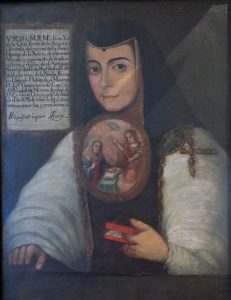
Sor Juana Ines de la Cruz (November 12, 1648 – April 17, 1695), was passionate about educational access, books, learning, equality and women. She was a 17th century nun, self-taught scholar and acclaimed writer. She was born in San Miguel Nepantla near Mexico City on November 12, 1648. Her parents were Isabel Ramirez, a Criolla (native-born Spanish) woman, and Captain Pedro Manuel de Asbaje of Spain. They didn’t marry. Juana lived a comfortable life on the estate of her maternal grandfather. She educated herself in her grandfather’s library. Juana was a high-spirited girl who loved learning and the life of the mind. She was also very beautiful to which her portraits will attest. She was fluent in Spanish, Nahuatl and Latin.
When she was 16 she asked for her parents’ permission to disguise herself as a youth to attend the university, which did not accept women. Her family sent her to court to meet influential people and find a husband. Instead, in 1669, she entered the monastery of the Hieronymite nuns. She choose to become a nun “to have no fixed occupation which might curtail my freedom to study.”
As a nun, she was free to study the 4,000 books she collected, mostly from her grandfather’s library. Her cell became a salon for the intellectual elite. She gained the patronage of the viceroy, Marquis de la Laguna, and the vicereine of New Spain, Countess Maria Luisa de Paredes. They supported and protected her, and had her works published in Spain. The two women became passionate friends. Whether or not a physical relationship existed isn’t clear, but love and desire definitely existed. In her poem, “My Lady” Sor Juana Inez describes her emotions: 
“I love you with so much passion, neither rudeness nor neglect can explain why I tied my tongue, yet left my heart unchecked.
The matter for me was simple; love for you was so strong, I could see you in my soul and talk to you all day long.
How unwisely my ardent love, which your glorious sun inflamed, sought to feed upon your brightness, though the risk of your fire was plain!
Let my love be ever doomed if guilty in its intent, for loving you is a crime of which I will never repent.”
Sor Juana’s sermons, which were transcribed and widely circulated, paid unusual attention to gender imagery. She said that she had been conceived as a male but was changed in utero by God to become female. She delighted in Jesus’ self-reference as a mother hen and spoke of the male and female aspects of God. She believed this mixture of identities also resided in the human soul:
“And all those who seek in me a father,” she wrote, “will find me a father. And those who seek in me a mother, will find in me a mother. And those who seek in me a husband, will find in me a husband. And those who seek in me a bride, will find a bride. And those who seek in me a brother, or a friend, or a neighbor, or a companion, likewise will find in me everything they desire.”
In 1692, Church authorities cracked down on Sr. Juana, not because of gossip or lesbian love poetry, but because she openly challenged societal and ecclesiastical values and norms on women. In her most famous work “Respuesta a Sor Filotea” she defends women’s rights to educational access and opportunity to serve as intellectual authorities. Sor Juana argued that women could educate other women.
Threatened by the Inquisition, Sor Juana was silenced for the final three years of her life. There are documents showing her agreeing to undergo penance. One such document is signed, “Yo, la Peor de Todas” (I, the Worst of all Women”). Her books, scientific and musical instruments were confiscated and sold. Sor Juana died three years later nursing her sister nuns during a cholera epidemic. She was 46. Sor Juana is buried in the site of her former convent, San Jeronimo, at the University of the Cloister of Sor Juana in Mexico City.
Sor Juana lay in oblivion for several hundred years until Phoenix-like she sprang into life. Two of the sparks were books and research done by writers Octavio Paz of Mexico and Dorothy Schons of the University of Texas. 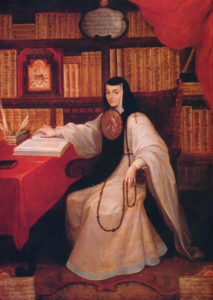
The relationship between Sor Juana and Countess Maria Luisa is explored in “Sor Juana’s Second Dream” a book published in 1999 by Dr. Alicia Gaspar de Alba. She also writes about Sor Juana in “(Un)framing the Bad Woman: Sor Juana, Malinche, Coyolxauqui and Other Rebels with a Cause,” published in 2014. A series of photos inspired by Sor Juana’s life and passions was created by Alma Lopez in 2019. Gaspar de Alba and Lopez, married to each other since 2008, have also explored lesbian connections with Our Lady of Guadalupe.
Maria Luisa Bemberg, one of Latin America’s foremost female directors, imagines the love between Juana and Maria Luisa in the 1990 film, “I, the Worst of All.” The film was Argentina’s entry for Best Foreign Language Film that year.
How far did the passions of Sor Juana go? My feeling is that she had an unbridled imagination, a tormented yearning and a chaste life. I’m sure she shared some tender, passionate, embraces with Maria Luisa, but a lack of time, privacy and mutual restraint kept a lid on any other expressions. But what a kiss it must have been!

I’m glad I’m not Jeanette DeMelo, editor-in-chief of the National Catholic Register. Today will not be a good day in the office. Vatican correspondent Edward Pentin received a few demerits, too. No holy card prize for best writer this week.
Yesterday, May 7, 2020, the Register published “Appeal for the Church and the World.” Read the letter here. Drafted by Archbishop Carlo Vigano, the letter claimed that the coronavirus pandemic has been exaggerated to foster widespread social panic and undercut freedom, as a preparation for the establishment of a one-world government. It is a religious freedom screed along the lines of “Easter People” – a petition released a month ago by Dr. Janet Smith, ex-Sacred Heart Major Seminary professor.
Vigano’s letter was published by several EWTN-owned media companies, including the National Catholic Register and Catholic News Agency (CNA). Campaign Life Coalition, an ultra-conservative Canadian organization, also published the letter on their website, LifeSiteNews.
Listed right after Archbishop Vigano as a major signatory was Cardinal Robert Sarah, prefect of the Vatican’s Congregation for Divine Worship and the Sacraments. Cardinal Sarah denied signing the letter. “I share on a personal basis some of the questions or concerns raised with regard to restrictions on fundamental freedoms,” he tweeted on his Twitter account, “but I have not signed this petition.”
Bishop Joseph Strickland, the Bishop of Tyler, Texas, told Catholic News Agency in a May 7 email that he “did not sign off on this letter.”
DeMelo said that Archbishop Vigano had vouched for the authenticity of Cardinal Sarah’s signature. “The Register contacted Archbishop Vigano the principal author, and asked him specifically about the authenticity of the signature of Cardinal Sarah and he said: “I can confirm 100% that Cardinal Sarah signed it,” DeMelo told CNA.
Either Archbishop Vigano or Cardinal Sarah are lying. Which one?
It is safe to say the Register won’t be publishing any more letters from Archbishop Vigano and his minions anytime soon without independently verifying every statement and name.
“Hell is not intended for homosexuals, but to those who marginalize them, insult them, mock them, push them to despair and suicide.” – Fr. Marco Bisceglia, May 11, 1975. 
One of the earliest, bravest, gay Catholic activists was Fr. Marco Bisceglia. He deserves to be honored and remembered.
In 1975 Fr. Marco Bisceglia was the first Roman Catholic priest to marry two gay men. They were not a couple, but two journalists from a conservative publication looking to entrap him. Bishop Giuseppe Vairo, head of the Diocese of Venosa in southern Italy, suspended him a divinis, banning him from exercising his priesthood. The bishop had previously removed Fr. Bisceglia as pastor of Sacred Heart parish in Lavello. The bishop objected to the 50-year-old priest’s organizing and politicizing worker strikes and economic struggles. Bisceglia countered, saying the institutional church contains a “profound contradiction.” This contradiction, he says, is between a church based on an alliance with the rich and powerful and “the real message of the Gospel.” At the time of the suspension Bisceglia was not sexually active, or even out to himself. 
Marco Bisceglia traced his homosexual awareness to a dream he had when he was fifteen: “my beautiful and pure sex, love and pleasure a grace.” When he awoke, he said, “I understood that the dream was reality and reality a nightmare.” Bisceglia went into the seminary because he was convinced that he had a religious vocation. “I think that trajectory is very typical in Italy,” said a friend of Bisceglia. “A boy who prefers reading to football; a boy who doesn’t feel attracted to girls and who doesn’t understand the nature of his desires; a boy who doesn’t want to admit his thwarted desires to his family and his mother; all of that led young Italian homosexuals quite naturally to seminaries. But what was fundamental in Marco Bisceglia was that he was not a hypocrite. For several decades, while he remained in the Church, he did not experience gay life. It was only afterwards that he lived out his homosexuality with the excess of the newly converted.”
Bisceglia’s activism shifted from labor to gay rights in 1980, with the murder of a gay male couple in Giarre, a town on the east coast of Sicily. On October 31, 1980, a 25-year-old man, Giorgio Agatino Giammona, and a 15-year-old youth, Antonio Galatola, were found dead, together, each with a gunshot wound to the head. The investigations led to 12-year-old Francesco Messina as the murderer. He was Galatola’s nephew. The couple was killed by Messina on behalf of their families and with the couple’s consent. They believed they could not live without being constantly harassed and threatened, so they chose to end their lives.
Their deaths sparked the formation of Italy’s first and largest national gay group – Arcigay (Associazione LGBTI italiana) in Palermo in December 1980. Marco Biscelgia was one of the prominent founders and activists. The group became known throughout Italy for its campaign for civil unions for gay and lesbian couples. But by the time Arcigay became a nationally established organization in Bologna in 1985, Bisceglia had drifted away and traces of him were lost.
After Bisceglia came out as a gay man in 1980 he made up for his lost, chaste years. He also lived with two men; Nichi Vendola, another labor activist, and Dadi, a youth from Algeria who had immigrated to Italy. Vendola recalled a conversation he had with Biscelgia where Biscelgia bitterly regretted becoming a priest. Instead, he said, he should have spent the time becoming aware and living out his homosexuality. Vendola recalls “He re-read himself, that is, this faith and priesthood, as the result of a neurosis, of the attempt to conceal his homosexuality.” Vendola argued with him, telling him his that priesthood was an important part of him. “I told him,” Vendola said, “don’t throw Jesus into that shadow core.” Bisceglia disappeared completely shortly after that conversation. He was HIV positive. Vendola, a communist and devout Roman Catholic, became an elected representative, then leader of the southern Italian region of Apulia. 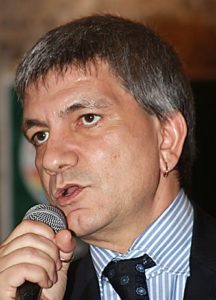
In the early 1990s, Msgr. Luigi Di Liegro, a popular and controversial priest who was head of the Caritas for the diocese of Rome made a call to Fr. Paolo Bosetti pastor of the suburban parish of San Cleto in Rome. He asked him to accept a priest who has the “heavy burden” of AIDS. “What should we do?” asked the pastor. “Just do him good” replied Monsignor Di Liegro.
Living in the rectory with other priests, Marco Bisceglia decided he wanted to be able to celebrate Mass again. With the encouragement of Fr. Bosetti, he addressed a petition to Cardinal Joseph Ratzinger, prefect of the Congregation for the Doctrine of the Faith. The answer came a few months later: the a divinis suspension was cancelled. Bisceglia wrote to his sister, Anita, with the news: “Dear Anita, when you receive this letter I will already be reintegrated into the presbyterial service. I am fully aware of my unworthiness; how firmly I am confident in the forgiveness of God and in his purifying and regenerating action. I hope I can, with your help, repair my past mistakes and misleadings. I address you with a sincerely pacified soul and with the desire for a profound reconciliation and mutual understanding, despite the diversity of life choices.”
What were his “past mistakes and misleadings?” Bisceglia never said. He returned to the priesthood in 1996 but he never repudiated his gay rights work. When Nichi Vendola heard Bisceglia had fallen ill with AIDS he asked to see him, but Bisceglia refused. He erected a wall “between what had been and what he intended to be” and wanted to be nothing but a man “who reflects and prays and thinks and prays and lives and prays.” 
Father Marco Bisceglia celebrated his “first” Mass in the Sanctuary of Loreto in the Marche region. A delegation from the priest’s home diocese and local church arrived, led by Bishop Vincenzo Cozzi. During the service Bisceglia recited a prayer he had composed on the merciful tenderness of God. In writing those verses, perhaps he thought of what he had confided to Nichi Vendola, when he said he feared he had done everything wrong and reduced his life to a pile of rubble. “With that same rubble,” he said, “you have thus rebuilt your Sanctuary.”
Father Bisceglia died on July 22, 2001. It was a day of violent protest by leftist groups over the G8 summit meeting in Genoa. Hundreds of people were injured and arrested. Bisceglia was buried in the priests’ cemetery in Lavello. Bishop Giuseppe Vairo died three days later.

At the beginning of April, a group of conservative Catholics began circulating an online petition called, “We Are an Easter People” demanding all U.S. bishops to “do everything you can to make possible some form of public Mass, especially the Easter liturgy, and then encourage pastors to conduct it” and to “demand that civil authorities recognize religious services as essential services.”
The author of the petition is Dr. Janet Smith, former professor of moral theology at Detroit’s Sacred Heart Major Seminary. Asked whether her use of the term “Easter People” meant she would like to see Mass on Easter Sunday, Dr. Smith said, “That is a beginning. Get the altars constructed in the parking lots or fields. Get the technology up and running that will broadcast the Mass. Is there any reason not to continue to offer Mass?” 
Smith didn’t want to put anyone at risk, but she observed that if we expect people to work in supermarkets, we can expect a priest to celebrate a Mass. “We can stay in our cars,” she said, “and he stays at the altar.” “We know many of our priests are eager to attend to those with Covid-19 and are willing to put their lives at risk. We admire their willingness to suffer and possibly to experience martyrdom.”
Dr. Smith notes that there are times when the state can impose restrictions, and one of those times is when there is danger in personal interaction. “But,” she added: “…we need to start with the right principle. Religion is an essential service – It is not just like a sporting event or concert that entertains us, that we can take or leave. The purpose of life is to be in a right relationship with the Lord. The sacraments are essentials means of sustaining that relationship. Unfortunately, whereas the founders of this country believed religious practice to be essential to the well-being of a nation and thus deserving of protection, too many in our culture think religion to be a pathetic superstition that does more harm than good. Such people are thrilled at any opportunity to wean religious believers from their practices.”
Ah, there it is, the crux of the matter. The image of the State telling Catholic conservatives what they can and cannot do, however it may affect other people. The Eucharist is central to their practice of Catholicism, both as a prize for the pure and a sanction against other believers who don’t share all their moral priorities. Is the essence of Catholicism only the assembly for the Eucharist, or Christ’s two commandments: to love God with your whole heart and soul, and to love your neighbor as yourself?
On April 5, 2020 The Wall Street Journal published “As Coronavirus Halts Masses, Conservative Catholics Push Back.” The comments by the Catholic subscribers were insightful and sometimes unintentionally hilarious:
“As seems to be often the case, conservative Catholics are espousing the “me first” doctrine spread by the U.S. president. One would expect Christians who love their neighbors as themselves would be doing everything they can to limit the spread of the virus. At present, in the absence of effective therapy or vaccine, it would seem right to steer clear of any gathering where one could pick up the infection and then carry it out to others.” – Jeffrey N.
“I attended just such an outside service a week ago. It was extremely well managed, with people spaced 6 feet minimum outside, hand sanitizer before approaching a gloved priest who used a tong to drop the host in the outstretched hand. Very dignified, and much safer than my earlier trip to the grocery store (in mask and gloves). No one came within six feet of each other. Very quiet, reverent and prayerful atmosphere. If you have no direct experience of this, I suggest you keep your opinion to yourself.” – Lisa A
“As the son of a devout, 93-year-old Catholic woman, I’m curious why some of these “conservative” Catholic voices are trying to rush my mom’s meeting with Jesus.” – Mike B.
“Public Mass pose a very significant risk of spreading the virus, so I agree with the shutdown here in Mpls/St. Paul. Even with seating everyone far apart during the service, in distributing Communion the Eucharistic Minister touches every person’s hand when he/she hands out the Host. The Host you receive has essentially been touched by everyone’s hand in front of you. Maybe there are creative ways around this to make it safer; I would be open to it. But if not done safely, this could be a disaster. – Monica M.
“What nonsense!” Have you ever attended mass before, the ministers just drop the host in the hands there is no physical contact, unless you choose to drink from the cup or shake hands. By your logic, you should not be touching anything at the grocery store or even the pharmacy as God knows who touched it before you. Also, you should not be touching the credit card machine with your credit card because God kows who swiped or inserted their card and germs there right before you! Bottom line, is that those who never let a crisis go to waste have put material needs like Costo and CVS before God. They and you will be answerable to the Almighty Judge for such poor judgement.” – Jacque D
“When I go to the grocery store and swipe my credit card I don’t immediately put my credit card or my hand in my mouth. I wash my hands first. That is the difference. And there is no “dropping” the communion in one’s hand. If so, there would be many more communions that fall all over the floor during Mass.” – Monica M.
“I thought the Roman Catholic church was pro-life?” – Jim M.
The chronicler William of Nangis describes the trial and execution of Marguerite Porete, 1310: 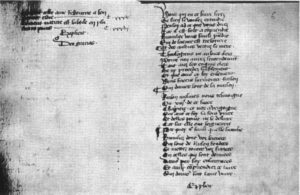
“Around the feast of Pentecost is happened at Paris that a certain pseudo-woman from Hainault, named Marguerite and called ‘la Porete,’ produced a certain book in which, according to the judgement of all the theologians who examined it diligently, many errors and heresies were contained; among which errors (were the beliefs), that the soul can be annihilated in the love of the Creator without censure or conscience or remorse and that it ought to yield to whatever by nature it strives for and desires. This (belief) manifestly rings forth as heresy. Moreover, she did not want to renounce this little book or the errors contained in it, and indeed she even made light of the sentence of excommunication laid on her by the inquisitor of heretical depravity, (who had laid this sentence) because she, although having been lawfully summoned before the bishop, did not want to appear and held out in her hardened malice for a year and more with an obstinate soul. In the end her ideas were exposed in the common field of La Greve through the deliberation of learned men; this was done before clergy and people who had been gathered specially for this purpose, and she was handed over to the secular court. Firmly receiving her into his power, the provost of Paris had her executed the next day by fire. She displayed many signs of penitence, both noble and pious, in her death. For this reason, the faces of many of those who witnessed it were affectionately moved to compassion for her; indeed, the eyes of many were filled with tears.”
Marguerite
Marguerite Porete was a 14th century French mystic who wrote a book entitled “The Mirror of Simple Annihilated Souls and Those Who Only Remain in Will and Desire of Love.” Written during the 1290s, the book was condemned by the French Inquisition as heretical. Marguerite was jailed for a year and a half and asked to recant. When she refused to respond to her inquisitors, she was condemned to death. 
The book provoked controversy, likely because of statements such as “a soul annihilated in the love of the Creator could, and should, grant to nature all that it desires,” which some took to mean that a soul can become one with God and that when in this state it can ignore moral law, it had no need for the Church and its sacraments or code of virtues. This is not what Marguerite taught, since she explained that souls in such a state desired only good and would not be able to sin.
Not much is known about Marguerite’s early life, except that she was born in Hainault in what is now Belgium around 1248 or 1250. She lived during different periods in Valenciennes, Lorraine, Reims and Paris. She seems to have been a stubborn woman, determined to share her ideas despite ecclesiastical censure. I don’t know why she refused to speak to her inquisitors during her trial and captivity. It may have been disdain or defiance, or it may have been to induce a similar helplessness and frustration in her persecutors. She refused to participate in an outcome that they had already decided.
Tina Beattie, professor of Catholic Studies at Roehampton University, London, said: “Little is known about Porete, apart from the record of her trial and what can be gleaned from her writings. It seems likely she was associated with the Beguines, a women’s religious movement which spread across northern Europe during the 13th and 14th centuries. Although the Beguines devoted themselves to charity, chastity and good works, they took no religious vows and their lifestyles varied greatly, from solitary itinerants (of which Porete was likely one) to enclosed communities. The Beguines were part of an era of vigorous spiritual flourishing during the Middle Ages. They were condemned by the Council of Vienne (1311-1312), which also condemned the Free Spirit Movement with which the Beguines were sometimes (and probably erroneously) identified.”
Her Killers – Bishops, Inquisitor, King
Gui de Colle Medio (or de Colmier) was bishop of Cambrai from 1296-1306. He condemned The Mirror and ordered it publicly burned in Marguerite’s presence in Valenciennes. She was ordered not to circulate her ideas or the book again.
The next bishop of Cambrai, Philippe de Marigny, made her life worse. His persecutions combined politics and religion. Philippe Le Portier de Marigny was appointed bishop of Cambrai in 1301 and archbishop of Sens in 1309. His half-brother, Enguerrand de Marigny, Baron Le Portier, was the chamberlain and chief minister to Philip IV, the king of France. Enguerrand was influential in obtaining these appointments for his brother. Philippe de Marigny became an important figure in the trials of the Knights Templar, and in the execution of Templar’s grand master, Jacques de Molay. De Molay was burned alive with three other Templar leaders on a scaffold in front of Notre Dame Cathedral on March 18, 1314. He uttered his famous curse, and both King Philip IV and Pope Clement V followed him to death (and judgement) within a year. The new king of France, Louis X, had Enguerrand de Marigny hanged for sorcery in April 1315. 
Marguerite Porete’s main persecutor and tormenter was the Inquisitor William of Paris, also known as William of Humbert. This Dominican priest and theologian was the confessor to King Philip IV. Appointed Inquisitor in 1303, William also played an important role in the trials and persecution of the Knights Templar. Interestingly, William died in 1314, the same year as Jacques de Molay, King Philip IV and Pope Clement V. Perhaps Molay included him in his curse.
The piety and politics of King Philip IV helped shape the deaths of Marguerite and the Knights Templar. Many of the enemies of the crown were cast as heretics; a convenient label for a self-appointed defender of the Faith. William of Paris supported the political machinations of the French king by suppressing the Knights Templar. The King aided the Dominican’s interests in ridding him of Marguerite—an independent and potentially dangerous religious voice. 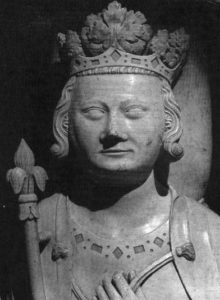
Arrest and Trial
In 1308 William had Marguerite Porete arrested along with a Beghard, Guiard de Cressonessart, who was also put on trial for heresy. Their trial began early in 1310 after they were held in prison in Paris for a year and a half. Under tremendous pressure, de Cressonessart eventually confessed and was found guilty. Marguerite refused to recant, withdraw her book or cooperative with the authorities, refusing to take the oath required by the Inquisitor to proceed with the trial. William was not going to have any easy time proving her a heretic. Marguerite had consulted three church authorities about her writing and gained their approval, including the highly respected Master of Theology Godfrey of Fontaines at the University of Paris. Godfrey’s involvement was an important factor in William’s handling of the trial, requiring him to build his case as carefully as possible. He consulted over 20 theologians—an excessive number–on the question of The Mirror’s orthodoxy. 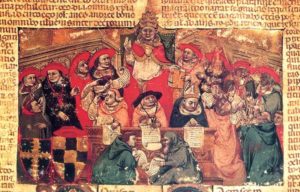
Death
On May 31, 1310 William of Paris read out a sentence that declared Marguerite “called Porete,” a beguine from Hainault, to be a relapsed heretic and released her to secular authority for punishment. He ordered all copies of a book she had written to be confiscated. William called her a “pseudo-mulier” (fake woman) and described The Mirror as “filled with errors and heresies.” William next consigned Guiard de Cressonessart, a would-be defender of Marguerite to life imprisonment. Marguerite condemned to be burnt at the stake as a relapsed heretic. On June 1, 1310 Marguerite was burned alive along with a relapsed Jew at the Place de Greve – today the Place de l’Hotel de Ville – in Paris. 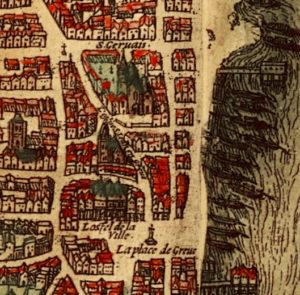
Why Was Marguerite a Target?
There are several possible reasons why so much effort was made to put Marguerite on trial and kill her.
- A growing hostility to the Beguine movement by Franciscans and Dominicans. Beguines were lay religious women who were not under male authority and direction and were outside civic and ecclesiastical structures. In 1311—the year after Marguerite’s death—ecclesiastical officials made several specific connections between Marguerite’s ideas and deeds and the Beguine status in general at the Council of Vienne.
- The popularity of The Mirror of Simple Souls gave Marguerite a prominent profile other lay writers didn’t possess. She also wrote in French, not Latin.
- Marguerite’s perceived association with the Free Spirit Movement or Brethren of the Free Spirit. Free Spirits were not a single movement or school of thought, but they caused great unease among churchman. They were considered heretical because of their antinomian views. One of beliefs some Free Spirits held is that they could not sin by having sexual relations with any person. Extracts of The Mirror of Simple Souls were cited in the bull Ad Nostrum issued by the Council of Vienne to condemn the Free Spirit movement as heretical.
Was there a whiff of homophobia in William of Paris’ denunciation of Marguerite as a “pseudo-woman”?
Marguerite Porete’s era is a mirror to our own. 40 years ago conservative political and religious leaders like President Ronald Regan and Pope John Paul II colluded on major political actions and social change. Lay Catholics began to search for new ways to experience a direct relationship to God. Many of these explorations were condemned since they were outside of traditional structures. The prevailing norms of sexual and gender expression were openly questioned by ordinary people. Sex and sexuality are fraught and fearful topics for the Catholic hierarchy, and many bishops tried their best to suppress them. Their best allies were presidents focused on wealth and expansion. Today, President Trump sounds and acts a lot like King Philip IV.
We can point to one improvement in the last 700 years. We can no longer be burned at the stake. 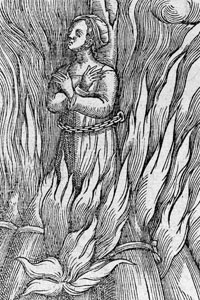
Further Reading:
The Beguine, the Angel, and the Inquisitor: The Trials of Marguerite Porete and Guiard of Cressonessart by Sean L. Field
Allegories of Love in Marguerite Porete’s ‘Mirror of Simple Souls’ by Suzanne Kocher
A Companion to Marguerite Porete and the Mirror of Simple Souls by Robert Stauffer and Wendy R. Terry
The World on the End of a Reed by Francesca Caroline Bussey
The Heresy of the Free Spirit in the Later Middle Ages by Robert E. Lerner
Courting Sanctity: Holy Women and the Capetians by Sean L. Field
Transmitting the Memory of a Medieval Heretic: Early Modern French Historians on Marguerite Porete by Danielle C. Dubois
Marguerite Porete: The Mirror of Simple Souls by Ellen Babinsky

The Truth hurts!
The author missed my favorite: “The Church is not a museum.” (Pope Francis’ opening sentence at the Synod on the Family.)
Enjoy the Little Book of Insults here.

Love the Enemy in Your Pew has been part of my Lenten reflection since I first read it in the February 20, 2012 edition of America magazine. The article also spurred me to organize a Lenten fish fry for my parish, where people of all opinions, backgrounds and political stripes could sit down together at a community meal. 
It was written by Dr. Gerald Schlabach, a professor of theology at the University of St. Thomas in Minneapolis, Minnesota. He is a Benedictine oblate, and deeply involved in the Bridgefolk movement for grassroots dialog between Mennonites and Catholics.

*****
“We Christians have struggled for centuries to understand how Jesus really expects us to love our enemies. (Bracket those vicious enemies who may actually be out to violently destroy us and ours.) To be ready for that kind of discipleship we must first learn to love our sisters and brothers in the Christian community itself. They are the ones close enough to stick in our craw.”
“So this Lent, listen to uncomfortable voices in your community. Listen without arguing back, for as long as it takes to really hear. Listen deliberately. Listen for the back story behind positions you may never agree with. Debate later.”
“Listening is the virtue this proposed Lenten discipline would inculcate if practiced throughout the year; it could become a lifelong habit. Especially in our era of culture wars, in which the blogosphere allows us to flame “enemies” we never meet face-to-face, nothing may affect us short of sitting down over coffee or on a park bench to listen face-to-face. ”
“Listen particularly to someone who represents all you think might be wrong with the church. A Catholic neighbor, for example, who is so impassioned with some ways of defending life that he or she seems to ignore other ways. Or an openly gay Catholic who continues to receive the Eucharist or an activist campaigning to make same-sex marriage unconstitutional. Listen to the fan of that dangerous neoconservative George Weigel, or the fan of that idealistic peacenik Jesuit John Dear; the parish liturgist who still includes those awful guitar-Mass ditties in the new Roman Mass or the patriarch in the next pew who glares when someone changes “his” to “God’s” for “the good of God’s holy Church.”
“Alas, Catholic culture makes it easy to leave Sunday Mass, week after week, without talking at all, much less inviting real conversations elsewhere in the week. But resolve to try conversation at least once, for Lent. Whoever your conversation partner is, ask to hear his or her back story. Resolve that while you may ask for clarification, you may not argue. Trust might begin to develop, though probably not in a first meeting. If the other person reciprocates and asks for your back story, wonderful Share your own story, but do not argue your position even then.”
“What if this encounter starts to soften your position? Yes, there is that risk. But this is Lent. Our Lord risked all, abandoning any self-defense other than the vindication of his Father. The cycle of the church year intends to teach us this: Resurrection is coming, but not without our dying to even the most righteous of causes, as we identify with the One who did so before us.”
|

























